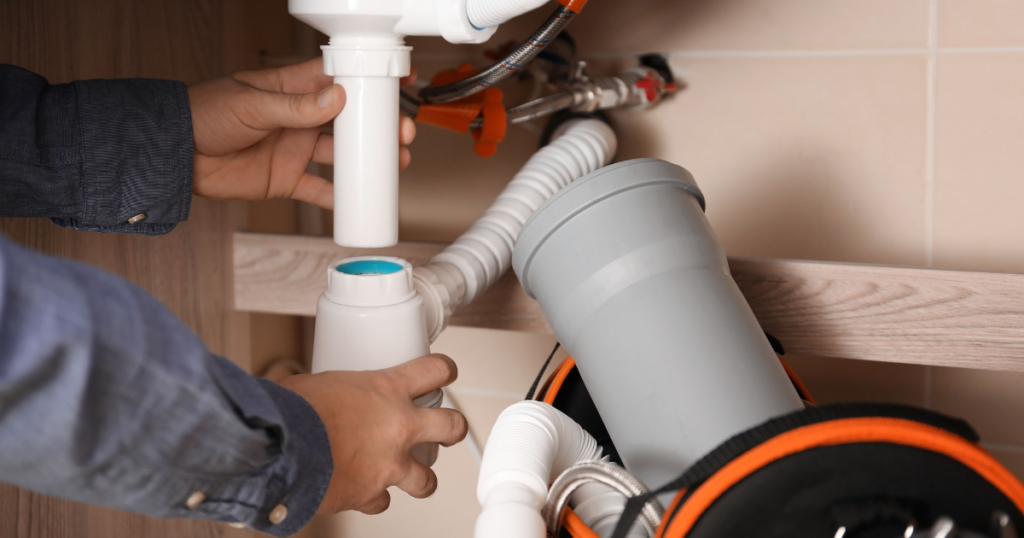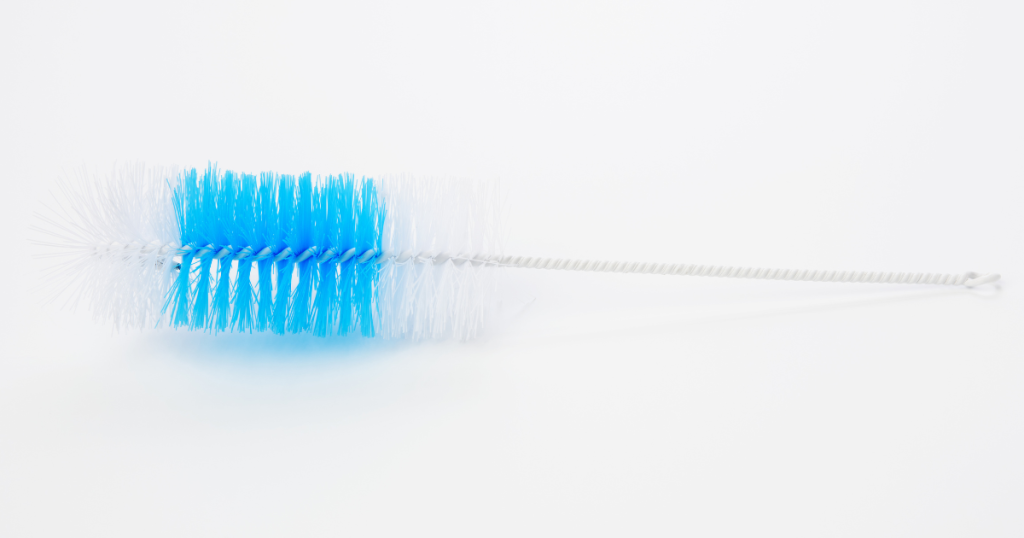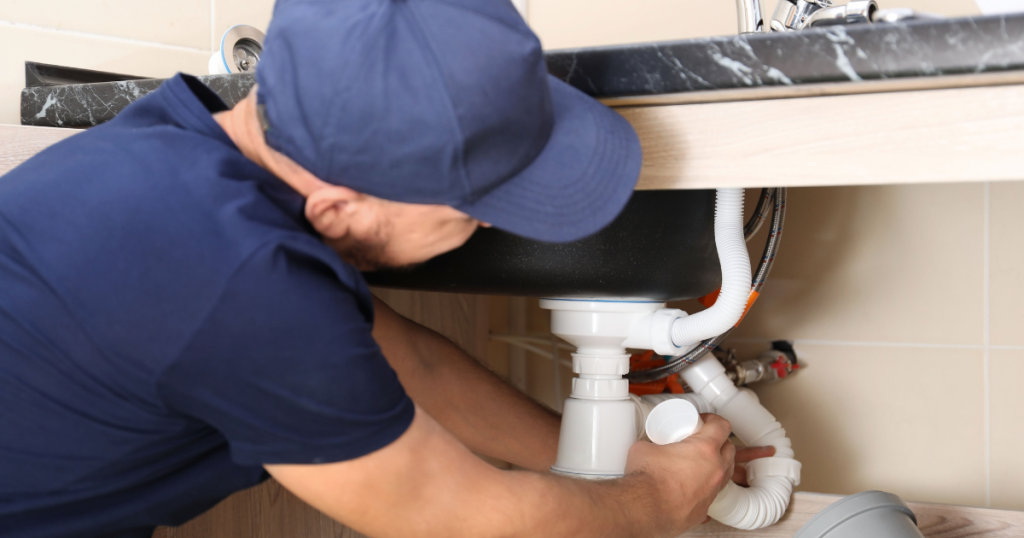
Are you experiencing bad smells from your sink? Is the drainage slow despite all of your efforts to fix it? This could be due to a dirty P-trap.
In this comprehensive guide, you will learn the step-by-step procedure on how to clean P-trap sink like a professional plumber. Following these instructions can successfully address this common plumbing problem and restore functionality and freshness back into your sink’s drain.
What Is a P-Trap Sink?
Sink traps, commonly referred to as P-traps, are curved lengths of pipe located beneath the drains. They collect and retain water to stop sewer smells from entering your drainage system. The unique curve of the P-traps also helps to catch small debris or objects that could clog your sink and reduce water flow.
The sharp drop in the u-shaped pipe underneath the sink helps to collect and drain water, as well as provides a gravity barrier against unwanted odors and gases from entering through the pipes.
Step-By-Step Procedure on How to Clean P-Trap Sink
Filling the P-trap with water creates a protective barrier that protects your home from smelly sewer lines.
However, in sinks that don’t see much use, the water in the P-trap may evaporate over time and break its seal, allowing sewer odors into your living space.
If this happens, running water for 15 seconds can help to restore the seal and remove the smell. If this does not work, follow this step-by-step guide to clean a sink trap thoroughly.
Get Your Tools Ready
Gather the necessary sink P-trap materials and tools before you begin. You’ll need a bucket, a wrench or channel locks to loosen the slip joint nuts, a flexible wire brush, masking or duct tape, and towels.
Turn off the Water Faucet
Make sure the water faucet in the sink is turned off. While you don’t need to turn off the water to the entire house, you should turn off the water to the sink you’re working on.
Even if the water is turned off, expect water and debris to flow out when you remove the P-trap, so set a bucket beneath it first.
Locate the Sink Trap and Place a Bucket Underneath It
P-traps are identified by a J or P-shaped curve under the sink. It’s located between the waste pipe (connected to the wall) and the tailpipe (directly linked to your sink). Under the trap, place a bucket or dishpan to catch any dirt and water that might escape.
Unscrew the Slip Joint Nuts
Loosen the slip joint nuts on each side of the trap with a wrench or channel lock. If you are unfamiliar with plumbing, try unscrewing them by hand for a better grasp. Apply masking or duct tape to the inside of the pliers to prevent scratches.
Remember that this is still a wet process. Make sure your bucket is available to catch any spilled water or debris throughout this stage.
Remove the Sink Trap
Take a note or a photo of the trap before you remove it. You can use this for reference when reassembling. Locate the o-rings on each side of the P-trap and place them somewhere safe. Clog your waste pipe with a towel or cloth to prevent sewer gas from entering your house.
You may need an adjustable wrench or pliers if the trap is stuck or the nuts are too tight. If the P-trap is full, water will spill out immediately after you loosen the nuts. The trap should be handled carefully, and its contents should be emptied into a bucket.
Clean the P-Trap Using a Flexible Wire Brush

Cleaning a sink trap is a simple procedure. Begin by manually removing any visible debris and disposing of it in the bucket or a garbage can. Then, moisten a flexible wire brush and insert it into the pipe to dislodge any leftover debris.
Continue cleaning the P-trap until no residue remains on the brush.
Rinse the Sink Trap
Thoroughly rinse and remove all loose dirt for a cleaner sink trap. Scrub and remove dirt from the trap and tailpipe using dishwashing detergent and a bottle brush or toothbrush.
Reassemble the Trap
Remember the order of installation for each item while reassembling the trap. Begin by screwing the slip joint nuts onto the waste and tailpipes. Then, return the o-rings to their original places. Finally, reconnect the sink trap to the waste and tailpipes.
Tighten the Slip Joint Nuts
Hand-tighten the slip joint nuts and then use a wrench to tighten them an additional quarter turn. Cross-threading or over-tightening the nuts may result in cracks or breaks in your pipes, so be cautious.
Test for Functionality and Leaks
Turn on the water faucet and test if the drain is moving freely and if the P-trap is leak-free. If there are no issues, you have successfully cleaned and reassembled your P-trap sink.
[Related: 5 Tips on How to Repair a Leaky Faucet (The Right Way)]
How Often Should You Clean Your P Traps?

To eliminate sewer odors in your home, it is recommended that P-traps be cleaned every one to three months. Doing this helps clear away accumulated debris while making sure the trap works efficiently.
What Is the Black Stuff in My P-Trap?
Your P-trap may contain what’s commonly known as black sludge, bio-slime, or biofilm – an accumulation of various substances including hair products, dead skin cells, body oils, food particles, toothpaste, hair, and phlegm that adheres to its walls in your bathroom drain.
Over time, organic materials accumulate and form an unpleasant slimy substance that may emit foul odors and block your drains.
Why Does My P-Trap Still Stink?
One possible cause may be that the water in your P-trap has evaporated, breaching the seal that prevents sewer gases from entering your home.
P-Traps in winter or dry climates may evaporate rapidly. To address this problem, pour some water down drains or toilets every few weeks to replenish its reserves in your P-Trap and prevent future odor problems.
However, if the smell continues despite your efforts, it is advisable to seek the assistance of a professional plumber.
Cleaning a P-trap can be a simple task for some homeowners, but when dealing with persistent or complex issues in your plumbing fixtures, it is always recommended to rely on the expertise of professionals.
By calling a reputable plumbing service like Stellar Plumbing, you can ensure a thorough inspection, effective solutions, and a fresh-smelling home.
Don’t let a stinky P-trap ruin your comfort. Contact Stellar Plumbing today for all your residential plumbing needs!
